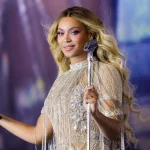The renowned Coachella Valley Music & Arts Festival is witnessing a significant cultural shift as South Asian artists emerge on its stages, captivating audiences with rich and diverse musical traditions. Fans eager to experience these revolutionary performances are descending upon Indio, California, making it a landmark year for representation and cultural fusion at one of the most profitable music events in the world.
This year’s lineup boasts names such as Indian singer and actor Diljit Singh Dosanjh and Pakistani singer and composer Ali Sethi, joining a host of international acts. The inclusion of South Asian performers is not just a nod to diversity, but a statement of a shifting cultural zeitgeist as audiences from across the globe resonate with their music.
With songs like Sethi’s ‘Pasoori’ becoming the most searched on Google in 2022, and Dosanjh’s influence spanning the Indian diaspora worldwide, their presence at Coachella is more than just a performance. It is a representation of their standing and impact on the global stage.
Fans from South Asian backgrounds, especially those born and raised in North America, find a reflection of their heritage in this festival. It’s a testament to their culture’s vibrancy and a moment of pride as they watch artists from their community take the spotlight.
The diversity and inclusivity of the lineup are also sparking important dialogues about cultural appropriation within festival culture, urging attendees to celebrate ethically and respectfully. As fashion and music blend at Coachella, attendees proudly showcase traditional South Asian attire and motifs, reclaiming and celebrating their cultural identity.
The Rise of South Asian Music on Global Platforms
Coachella’s embrace of South Asian artists is a significant step forward for the visibility and acceptance of South Asian music on international platforms. As these artists deliver compelling performances, they are not just singing for their loyal fans; they’re singing for every individual who ever felt unheard or unseen in mainstream music narratives.
For many South Asian Americans, this moment is more than just entertainment; it is a powerful experience of cultural validation and a harbinger for an inclusive and diverse future in global music festivals.


